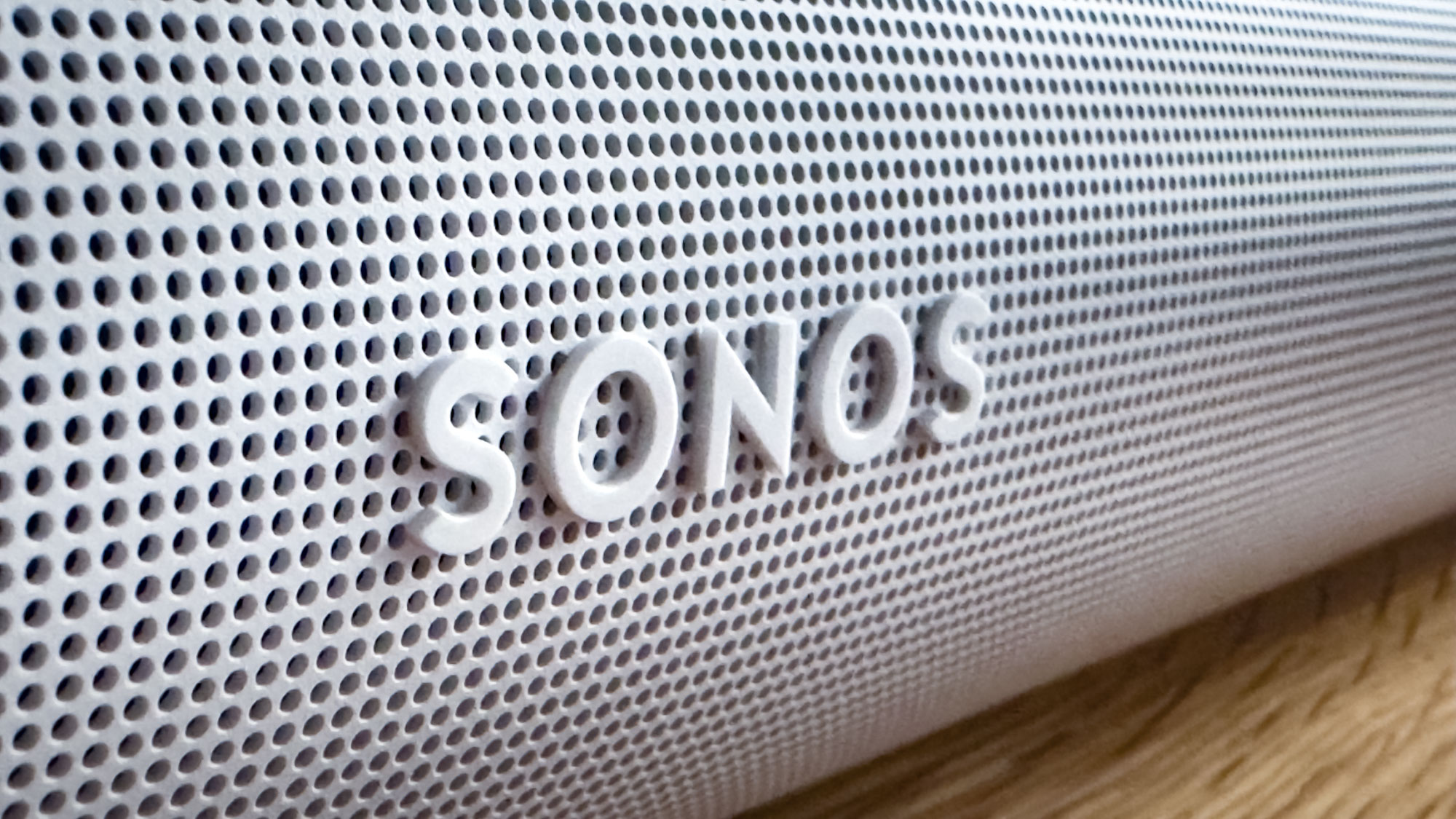Tom's Guide Verdict
The Garmin Forerunner 970 is the best sports watch available for runners and triathletes, offering an upgraded design that’s more attractive and durable than the Forerunner 965, reliably accurate tracking, and detailed training insights that go beyond what I’ve seen before from a watch. It sets new standards, but it does come at a high price and the battery life is underwhelming.
Pros
- +
Bright AMOLED display with sapphire screen
- +
Accurate tracking
- +
Built-in flashlight
- +
New running economy and tolerance stats
Cons
- -
Shorter battery life than Forerunner 965
- -
Only one size
- -
Need a Garmin HRM600 to unlock some stats
Why you can trust Tom's Guide
The Garmin Forerunner 970 is the best Garmin watch for runners and triathletes, offering almost all of the key features of the Garmin Fenix 8 in a more affordable and lightweight package.
It also introduces some new features to Garmin’s range, such as running tolerance and economy estimates, and the upgraded design has a brighter AMOLED display than the Garmin Forerunner 965, plus a built-in flashlight and a scratch-resistant sapphire crystal screen.
The drawbacks to the Forerunner 970 are its high price, especially as you need to pair it with the $169 Garmin HRM600 chest strap to unlock running economy measurements, and its relatively short battery life compared with the Fenix 8 and Forerunner 965.
I’ve loved using the watch, and in my Garmin Forerunner 970 review, I’ll run through my testing and how it compares to the best sports watches, but also say which rivals might offer better value.
Garmin Forerunner 970 review: Price and availability
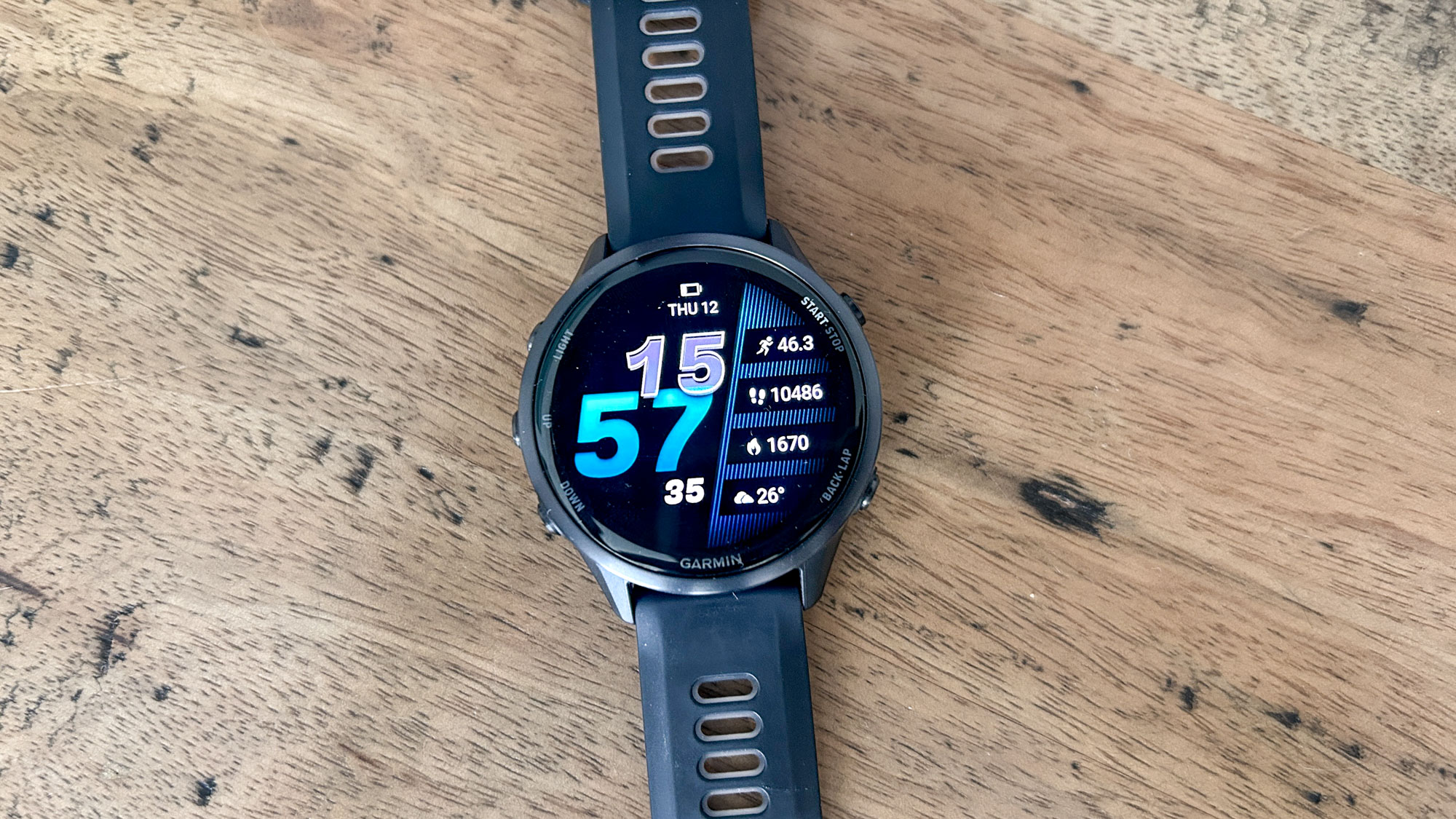
The Garmin Forerunner 970 launched in May 2025 and costs $749.99 / £629.99, a considerable jump in price from its predecessor, the Garmin Forerunner 965, which is $599 / £599 and often reduced to under $500.
It comes in one size and three colors — black, white and grey/gold. When considering the price of the Forerunner 970, it’s worth factoring in that some of its new features also require the Garmin HRM600 chest strap, which is $169.99 / £149.99.
Garmin Forerunner 970 review: Specs compared
| Row 0 - Cell 0 | Forerunner 965 | Forerunner 970 |
Price | $599 | $749 |
Case size | 47.1 x 47.1 x 13.2mm | 47 x 47 x 12.9mm |
Screen size | 1.4 inches | 1.4 inches |
Resolution | 454 x 454 pixels | 454 x 454 pixels |
Screen material | Gorilla Glass | Sapphire Crystal |
Weight | 53g | 56g |
GPS battery life | 31 hours | 26 hours |
Smartwatch battery life | 23 days | 15 days |
Touchscreen | Yes | Yes |
Speaker/Mic | No | Yes |
Built-in flashlight | No | Yes |
Heart rate sensor | Elevate v4 | Elevate v5 |
Garmin Forerunner 970 review: Design and display
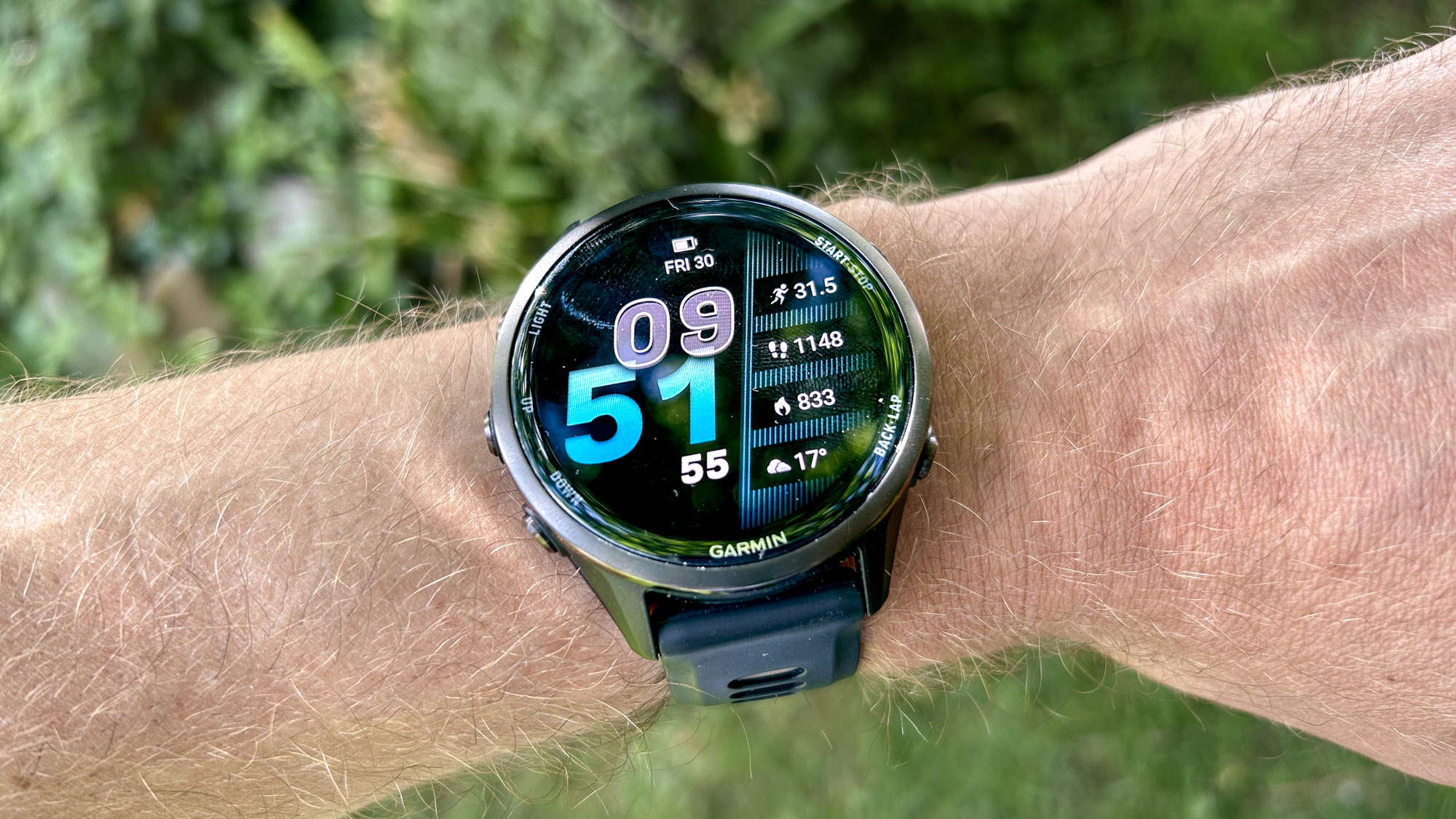
The Garmin Forerunner 970 has some notable design upgrades compared with the Forerunner 965, including, for the first time on a Forerunner watch, a built-in flashlight.
Get instant access to breaking news, the hottest reviews, great deals and helpful tips.
This sits on top of the watch and has four brightness settings, plus a red mode. It’s very useful day-to-day, even if you live a relatively unadventurous life like me — it would be invaluable for those who camp or are outdoors a lot at night.
The other big upgrade is the sapphire crystal display, which is more scratch-resistant than the Gorilla glass used on the Forerunner 965 and other Forerunner models.
As someone who scratched the Forerunner 965 during testing, having a sapphire screen gives peace of mind and also means you can avoid using screen protectors. The titanium bezel surrounding the screen also toughens up the watch, which is otherwise made of plastic.

The 1.4-inch AMOLED screen is also brighter than the display on the Forerunner 965, notably so when you put the two watches side-by-side. It’s clearer to read under bright sunlight as a result, though this bright screen does reduce the battery life on the Forerunner 970 compared with the 965.
On the back of the watch is Garmin’s Elevate v5 optical heart rate sensor, which is an upgrade on the v4 sensor on the Forerunner 965 and one of the most accurate wrist-based sensors I’ve tested in general — it’s used on most Garmin watches released in the past couple of years.

The Forerunner 970 uses this sensor to offer ECG measurements, which weren’t available on the Forerunner 965. The new watch also has a mic and speaker, like the Fenix 8 and Forerunner 570 watches.
While the Forerunner 970 doesn’t offer the bright and distinctive designs you get on the Garmin Forerunner 570, it's a good-looking watch you can wear 24/7, and it’s lightweight and comfortable to wear all the time.
It is, however, a shame that it only comes in one size, unlike the Forerunner 570. Those with smaller wrists who’d like a smaller watch than the 47mm Forerunner 970, but still want all of Garmin’s best features, only really have the Fenix 8 43mm as an option.
The onboard sensors include a pulse oximeter and barometric altimeter, and the GPS chipset allows for multi-band tracking for extra accuracy. You can pair external sensors like cycling power meters via both Bluetooth and ANT+.
With a water resistance rating of 5 ATM, the Forerunner 970 is suitable for pool and open-water swimming, but it is not a diveproof watch like the Fenix 8.
Garmin Forerunner 970 review: Sports tracking and training analysis
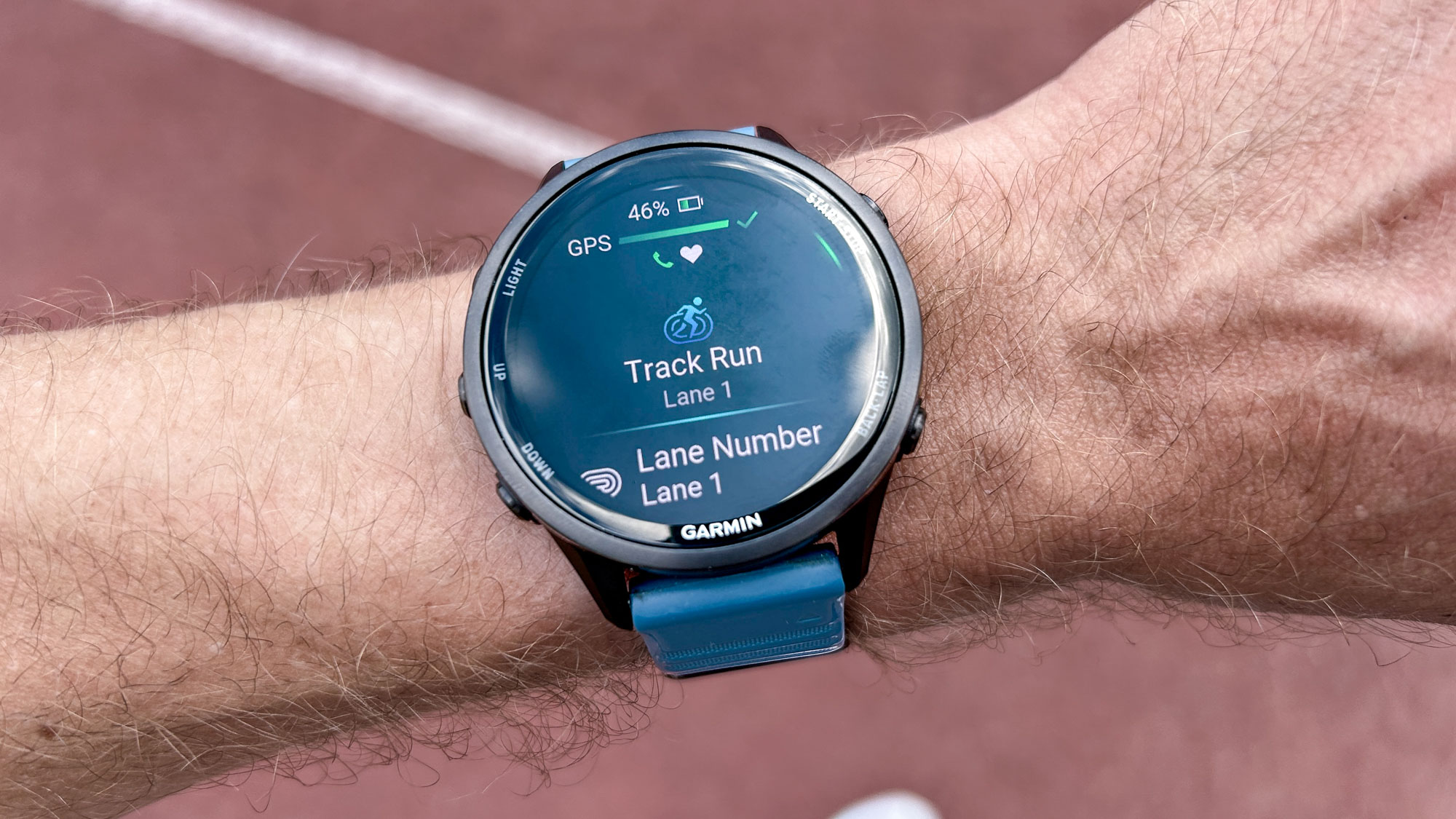
The Garmin Forerunner 970 is the top Forerunner watch in the brand’s range, so as you’d expect, it’s fully laden with all of Garmin’s top sports tracking and training analysis features.
It offers all the sports modes and stats you could ever want, including being a golf watch, and extensive training load analysis, including heat and altitude acclimation, VO2 max and race time estimates, and a rating of your training readiness based on factors like sleep, stress and recent workouts.
For the most part, the analysis is the same as on past top models from Garmin, like the Fenix 8, but the Forerunner 970 introduces some new features with a running economy rating, step speed loss measurements and running tolerance, which estimates the training load you can tolerate safely each week.

To get the running economy and step speed loss measurements, you need to pair the Forerunner 970 with the Garmin HRM600 chest strap, which is a significant extra outlay.
Step speed loss is a measurement of how much you slow down with each stride when running, when your foot hits the ground. A lower number is better because that means it takes less effort to speed back up with each stride.
You also get a percentage measurement of step speed loss, which is more useful as you tend to lose more speed when running faster, but the percentage is comparable across speeds.
This stat is one of several that feed into your running economy rating, which is unlocked after you do several runs with the watch and chest strap. Heart rate, speed and other running technique stats like ground contact time also feed into the economy measurement.
Running economy is an important metric because the better your economy, the less effort or energy it costs you to run at a certain speed, which basically means you can run faster for longer.
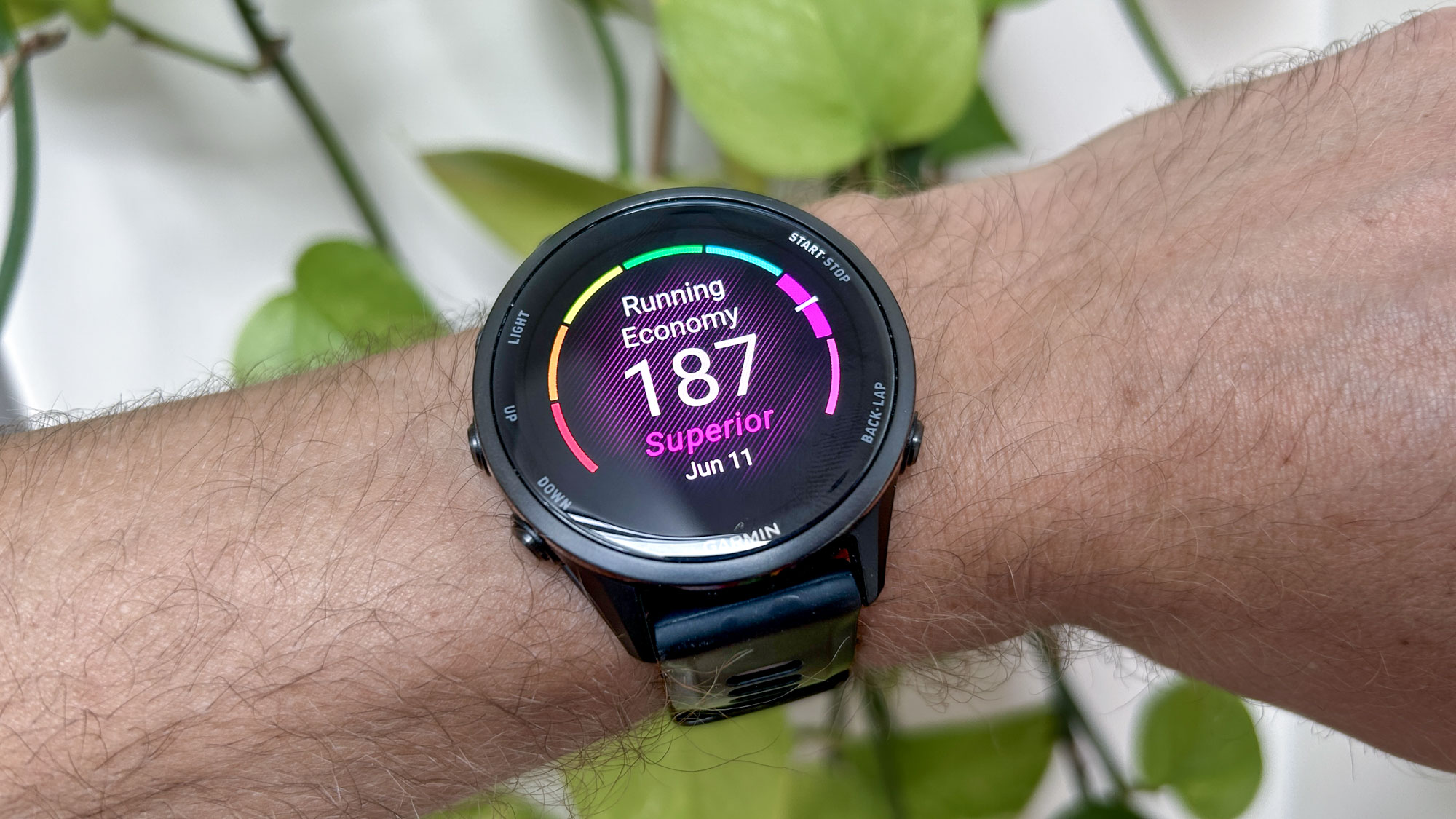
The value of Garmin’s measurement will be if you can see your economy improving over time, which mostly comes about from structured training and more mileage in general, though genetic factors are also a big part of economy.
It’s an innovative addition to the watch and something I love as a keen runner, and it’s definitely something I’ll keep an eye on when marathon training in particular.
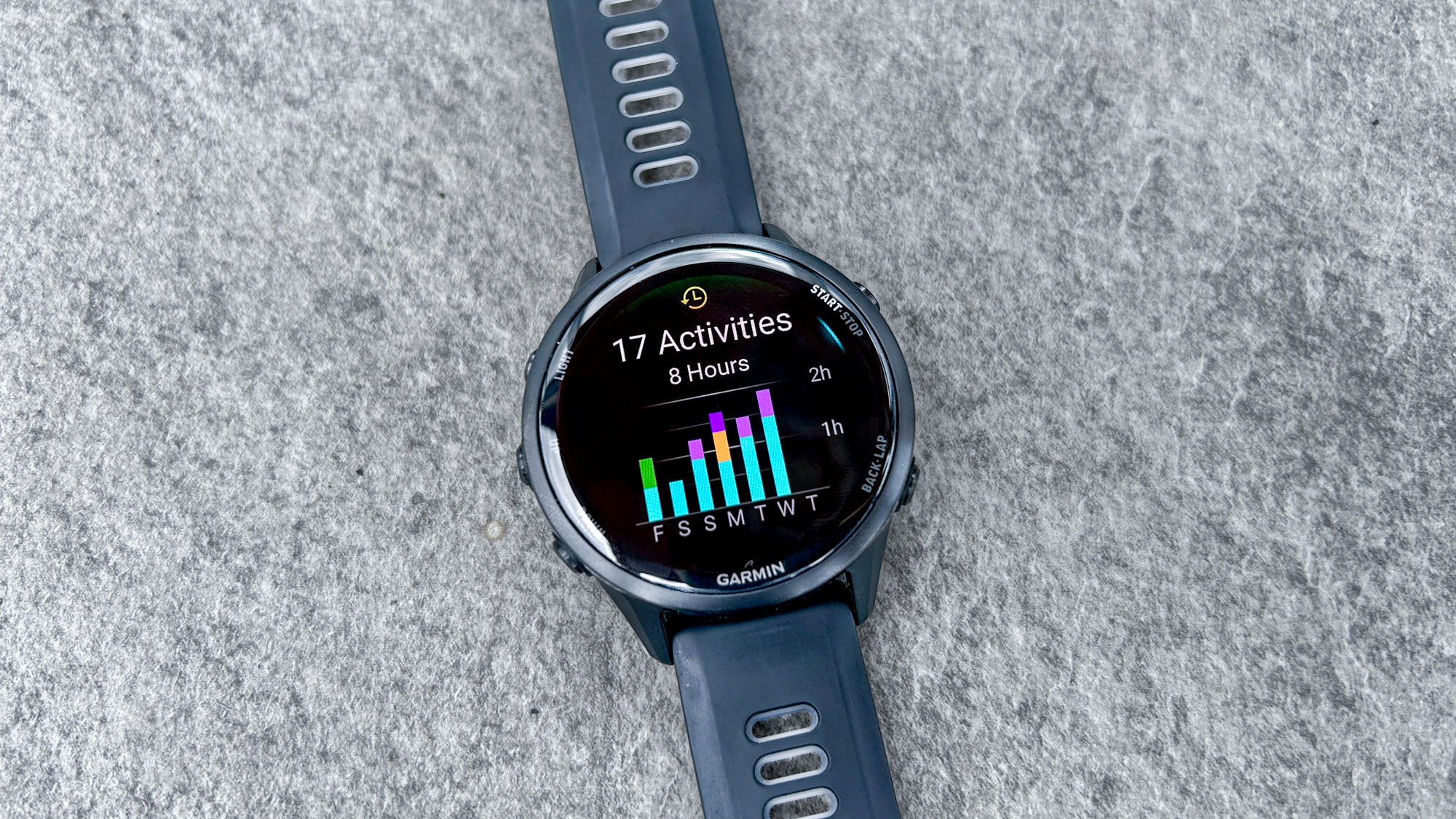
The final new feature is running tolerance, which says how much running your body is able to handle in terms of miles or kilometers based on your training history.
Not increasing your mileage by too much week-to-week is a golden rule for runners trying to avoid injury, and many judge their training load simply by the amount of miles they run each week. But tolerance goes a step further by accounting for the extra impact of faster, harder runs.
For example, when I ran a 10K race wearing the Forerunner 970, the total distance was 10K, but the impact load was 15.2km, because it was an all-out effort.

This is a helpful way to remind runners that runs can differ in the amount of impact they have on the body and give a total mileage for the week that adds in extra to account for harder runs, because doing too much fast running can also lead to injury.
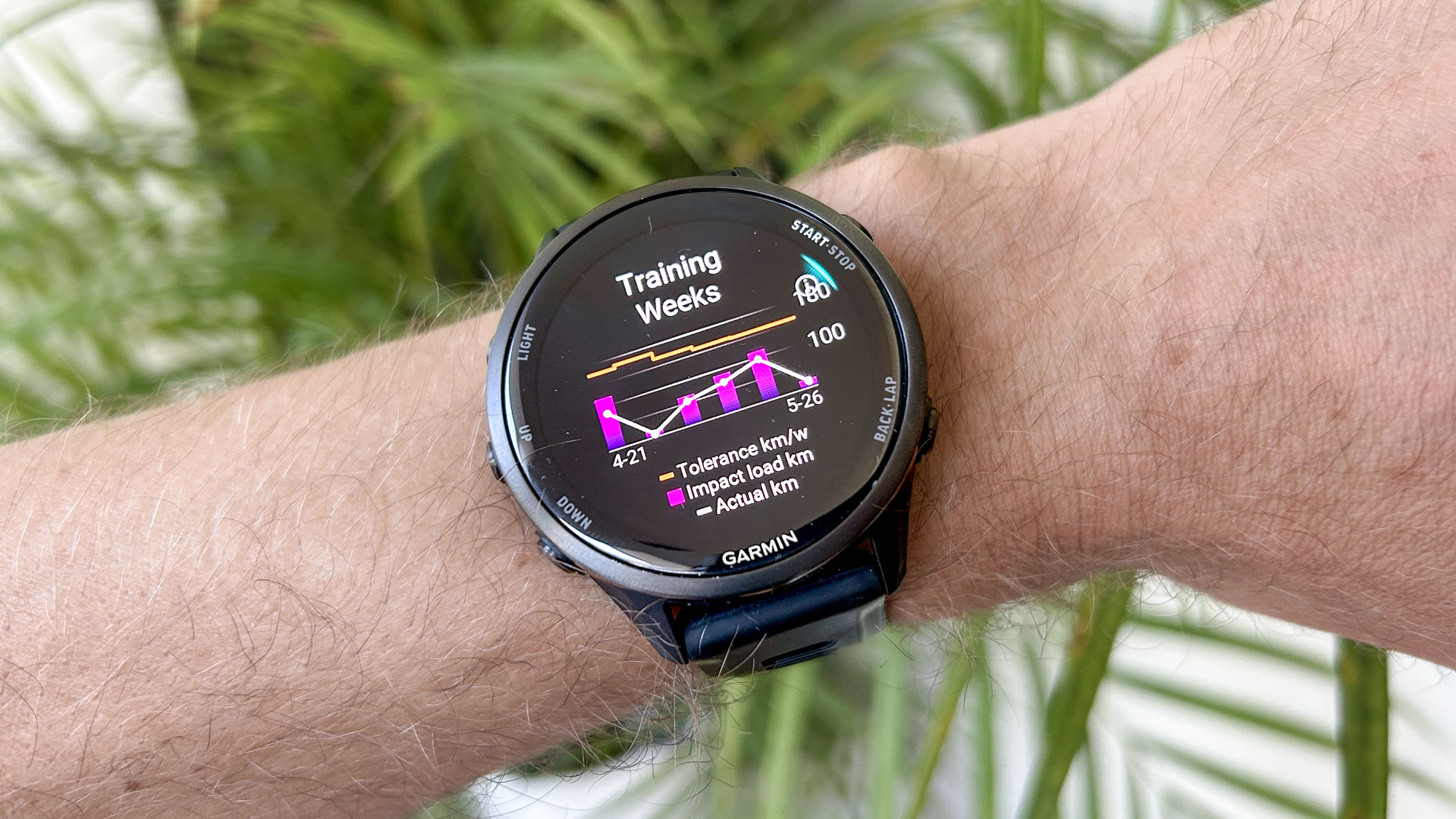
Given how well developed Garmin’s tracking and analysis features are at this stage, I’m impressed that they’ve been able to introduce some genuinely useful new features to the Forerunner 970, and runners in particular benefit.
It is a shame you have to use the HRM600 chest strap to get some of these features, not only because of the cost but also because many runners simply don’t like wearing chest straps, particularly women, which is why Garmin made the HRM-Fit to attach to a sports bra.
Garmin Forerunner 970 review: GPS and heart rate accuracy
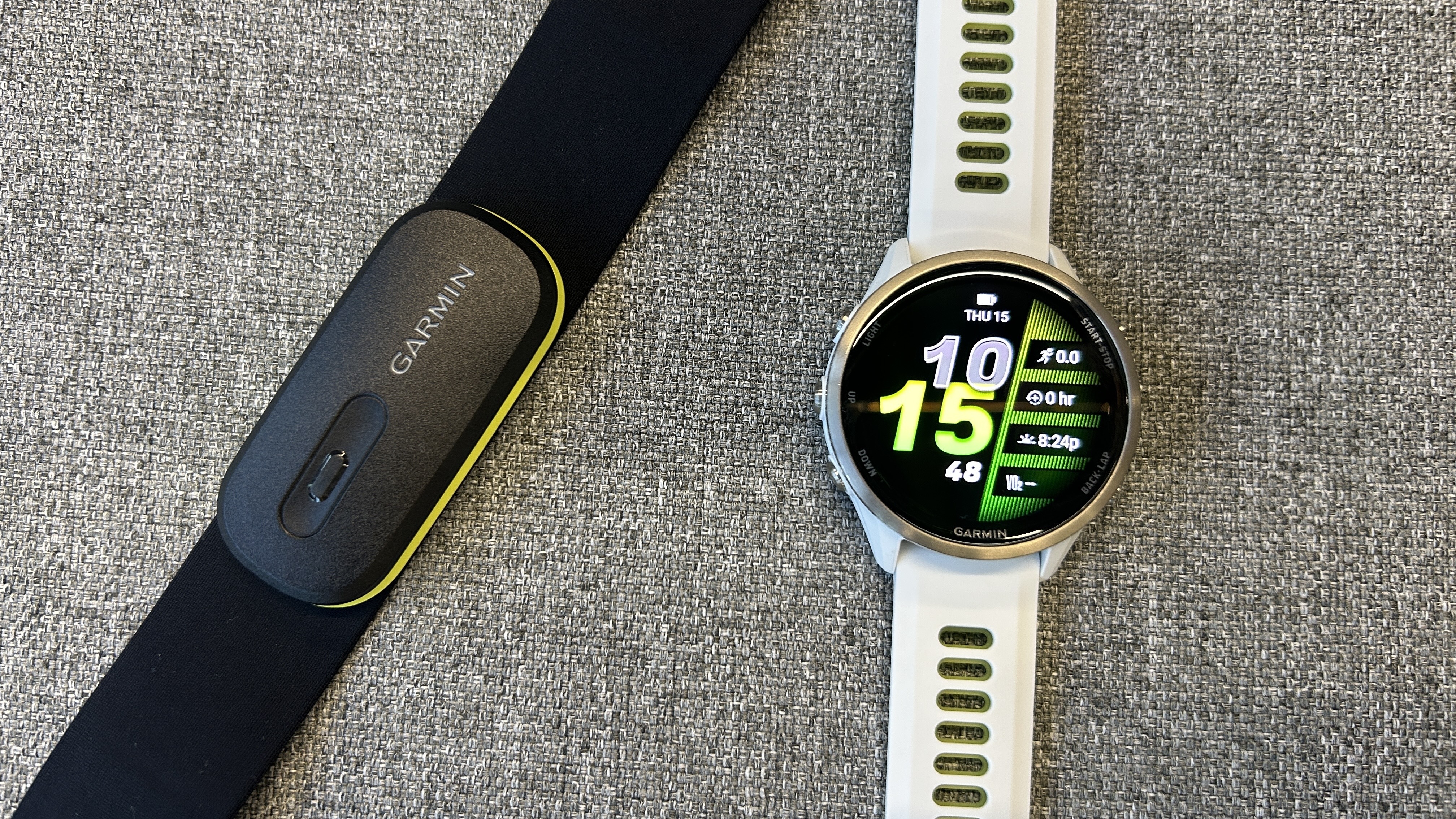
For most of my testing of the Forerunner 970, I had it paired to the HRM600 chest strap, so I couldn’t gauge the accuracy of the optical sensor on the watch. But I did some runs just using the watch’s heart rate sensor to check its accuracy against a different chest strap, and it was always on point.
I’ve also used Garmin watches for many years, and the Elevate Gen5 sensor has been reliably accurate for me on any watch I’ve tested. If you don’t want to invest in the HRM600 strap to use with the Forerunner 970, you will still get good heart rate measurements.
The GPS accuracy was also excellent during my testing. I primarily used the watch in multi-band mode for the most accurate results, and the GPS tracks from the Forerunner 970 were always free of major errors when I checked them afterwards.
Garmin Forerunner 970 review: Activity and sleep tracking
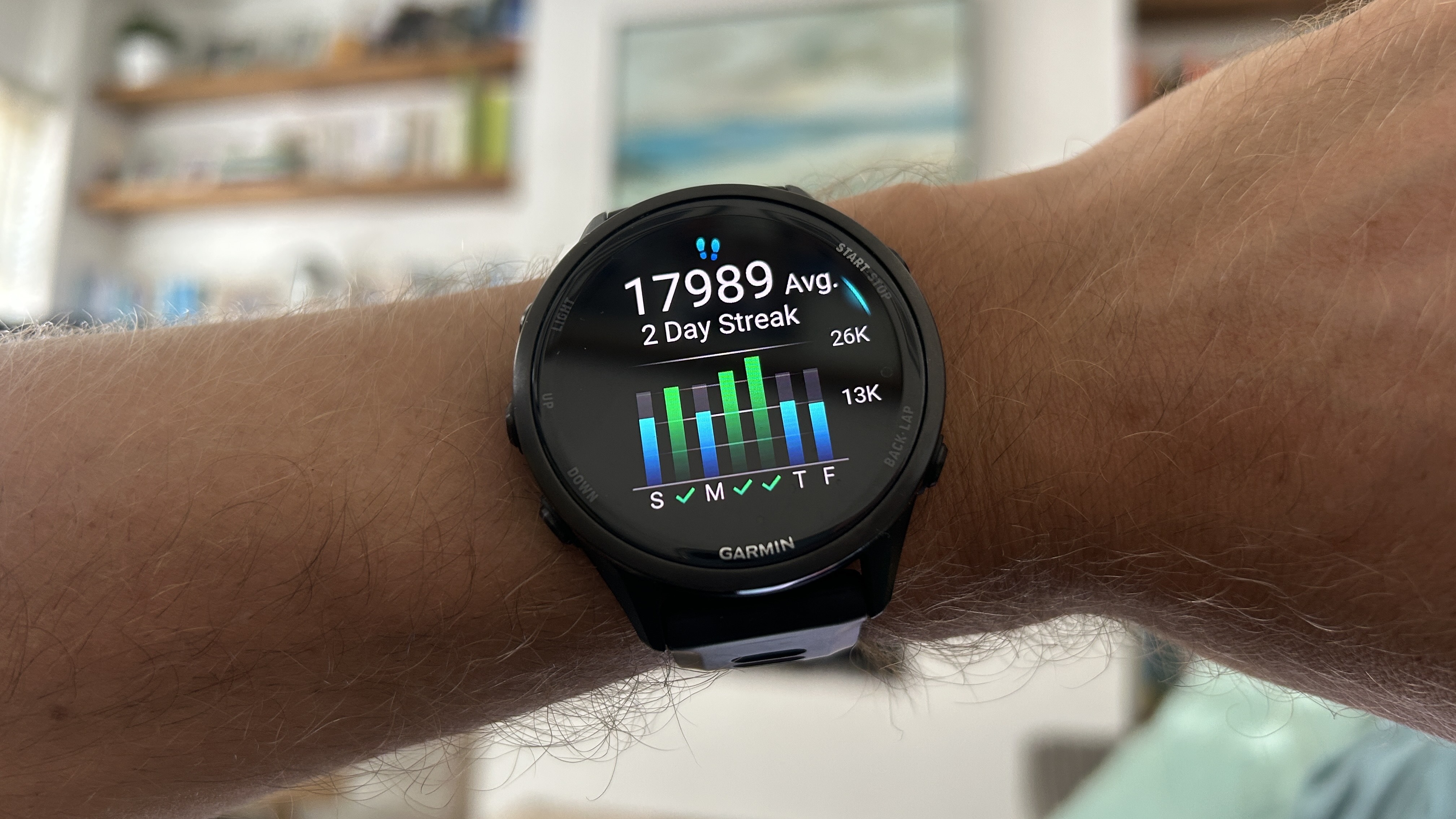
The Forerunner 970 tracks all the usual daily activity stats like steps, calories, floors climbed and active minutes, and can also be set to notify you if you’re sedentary for too long.
It also tracks stress throughout the day and measures your ‘Body Battery’ energy levels, which are depleted by activity and topped up via sleep.
The watch also sums up your day in a new Evening Report, which summarizes your activity and gives a sleep recommendation — whether you need more or less than usual. It also shows your suggested workouts for tomorrow and any calendar events.
In the morning, you get a Morning Report, which shows similar stuff along with your sleep score from the night. You can customize both reports to include the info you want.
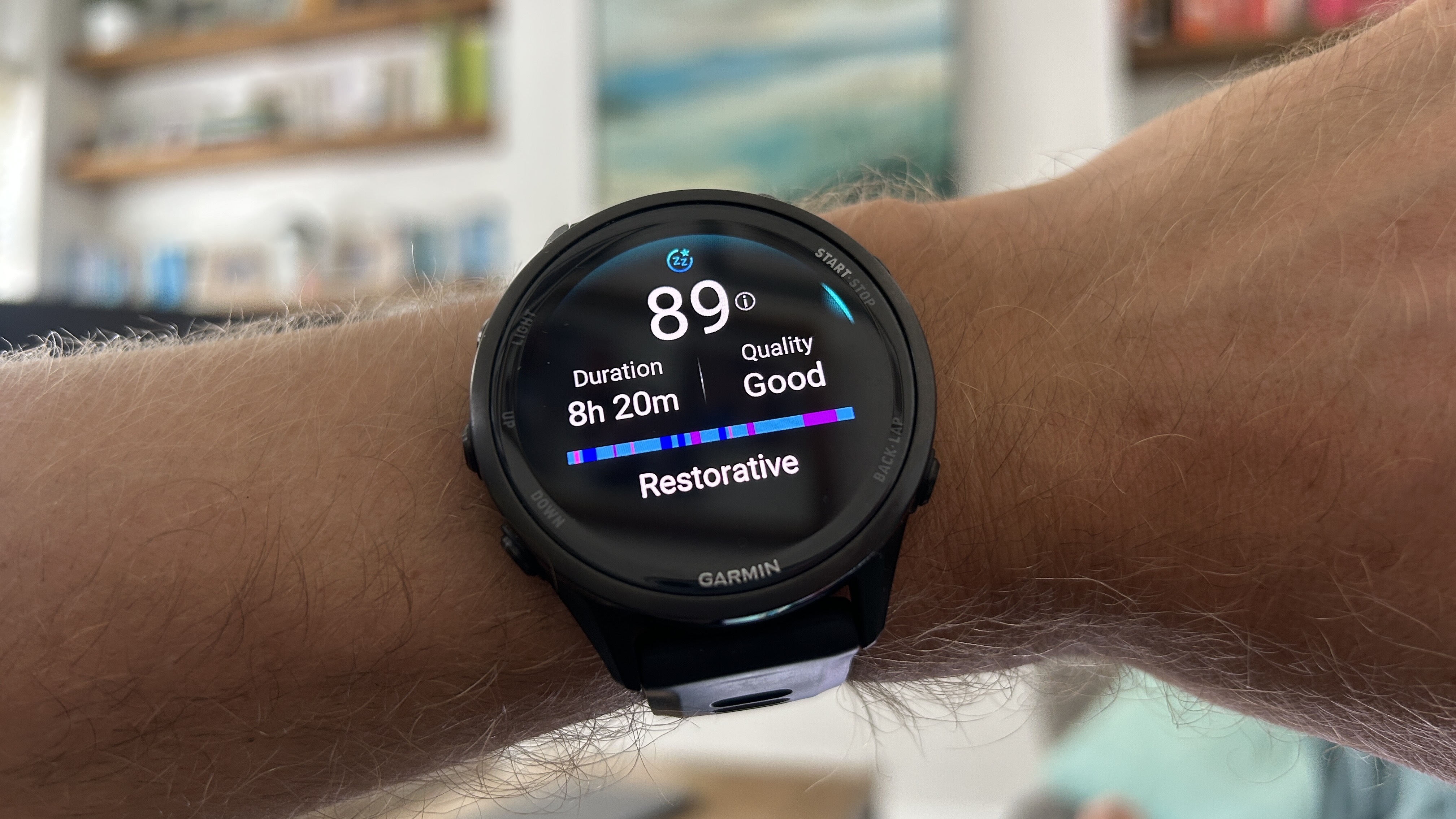
When it comes to sleep tracking itself, you get a wealth of data on your night’s rest, along with a rating out of 100, including sleep stages, your heart rate variability and a summary of any breathing variations.
Garmin watches have a habit of overestimating time asleep in my experience, in that they often log periods where you’re still (but awake) as light sleep.
But the Forerunner 970’s overall rating of my sleep each night was in line with how I felt, and it did encourage me to try and get better sleep by limiting alcohol and sticking to a regular bedtime.
Garmin Forerunner 970 review: Battery life
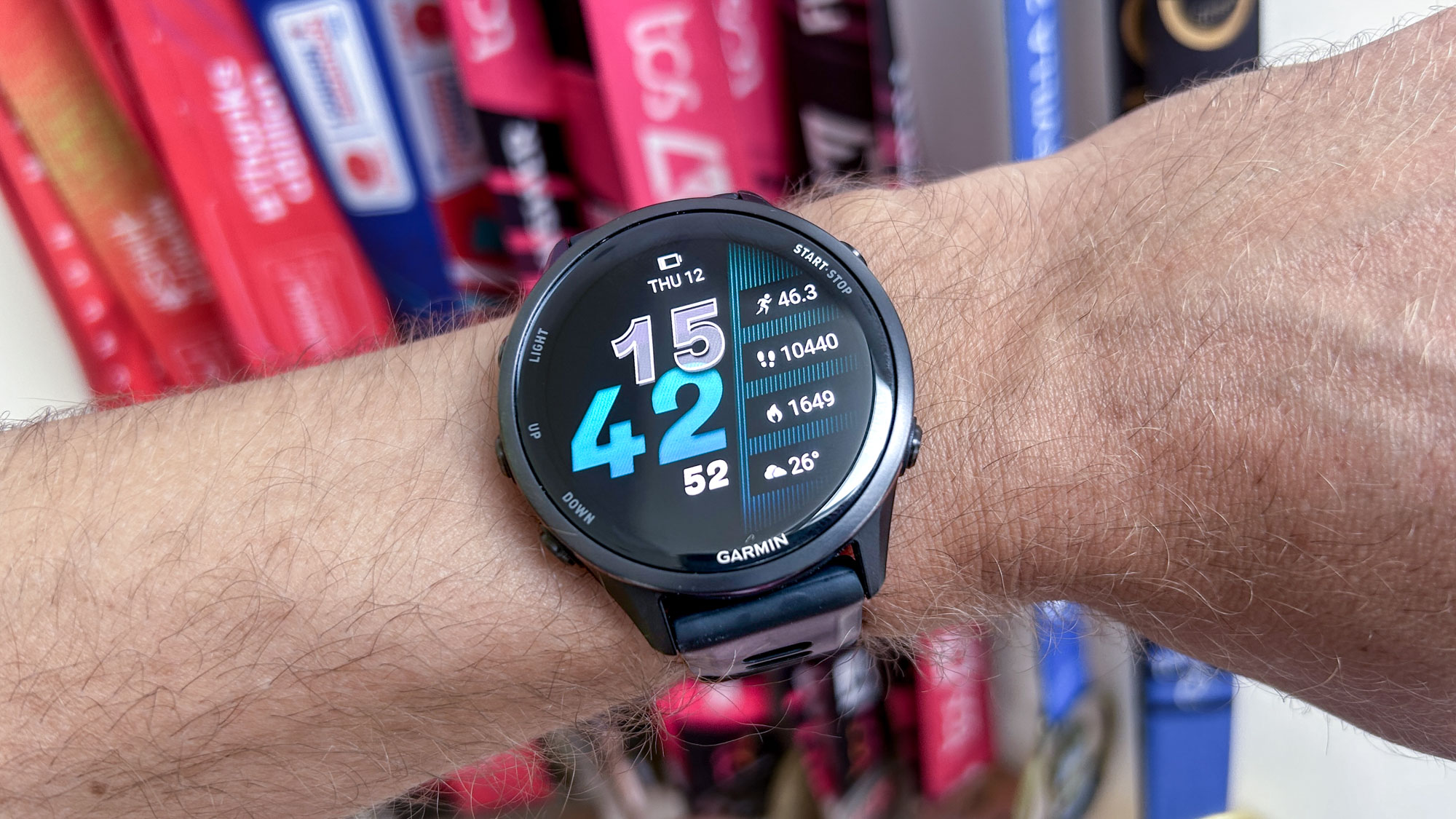
The big, bright AMOLED display on the Forerunner 970 is wonderful, but its battery life does suffer as a result.
With the screen set to always-on, the watch lasted me four or five days on a charge, running every day, whereas the Forerunner 965 would last me seven days under the same conditions.
When I set the screen to raise to wake outside of workouts it did extend the battery life to seven or eight days, but that’s still less than I’ve become accustomed to with Garmin’s 47mm models — the Fenix 8 47mm lasts me six or seven days with the screen always-on, so the brighter display is definitely having an impact on the Forerunner 970.
If you’re a triathlete or a cyclist regularly doing long rides, then the battery life will be even shorter.
It’s still just about long enough to not be an annoyance in how often you need to charge it, and the Forerunner 970 can track an individual activity for over 20 hours even in its most accurate GPS mode, but the drop-off in battery life compared with other Garmins is noticeable.
Garmin Forerunner 970 review: Smart features

While the Forerunner 970 can’t match the features available on the best smartwatches, which offer cellular connectivity and far more fully-stocked app stores, it does have some useful smarts.
These include the new mic and speaker, which you can use to issue voice commands like ‘start a timer’ or activate your phone’s voice assistant.
It also has music storage and can link up with streaming services, including Spotify, to store your playlists offline, and NFC payments through Garmin Pay.
The ConnectIQ app store has a few useful apps and also offers extra data fields for certain sports and more watch faces — I always download my parkrun barcode to my watch through an app and add rolling pace to my running data fields.
There are more smart features here than you get on other brands’ sports watches, and you can customize the watch face extensively, but the Forerunner 970 is still not as smart as a device like the Apple Watch Ultra 2.
Garmin Forerunner 970 review: Safety and navigation
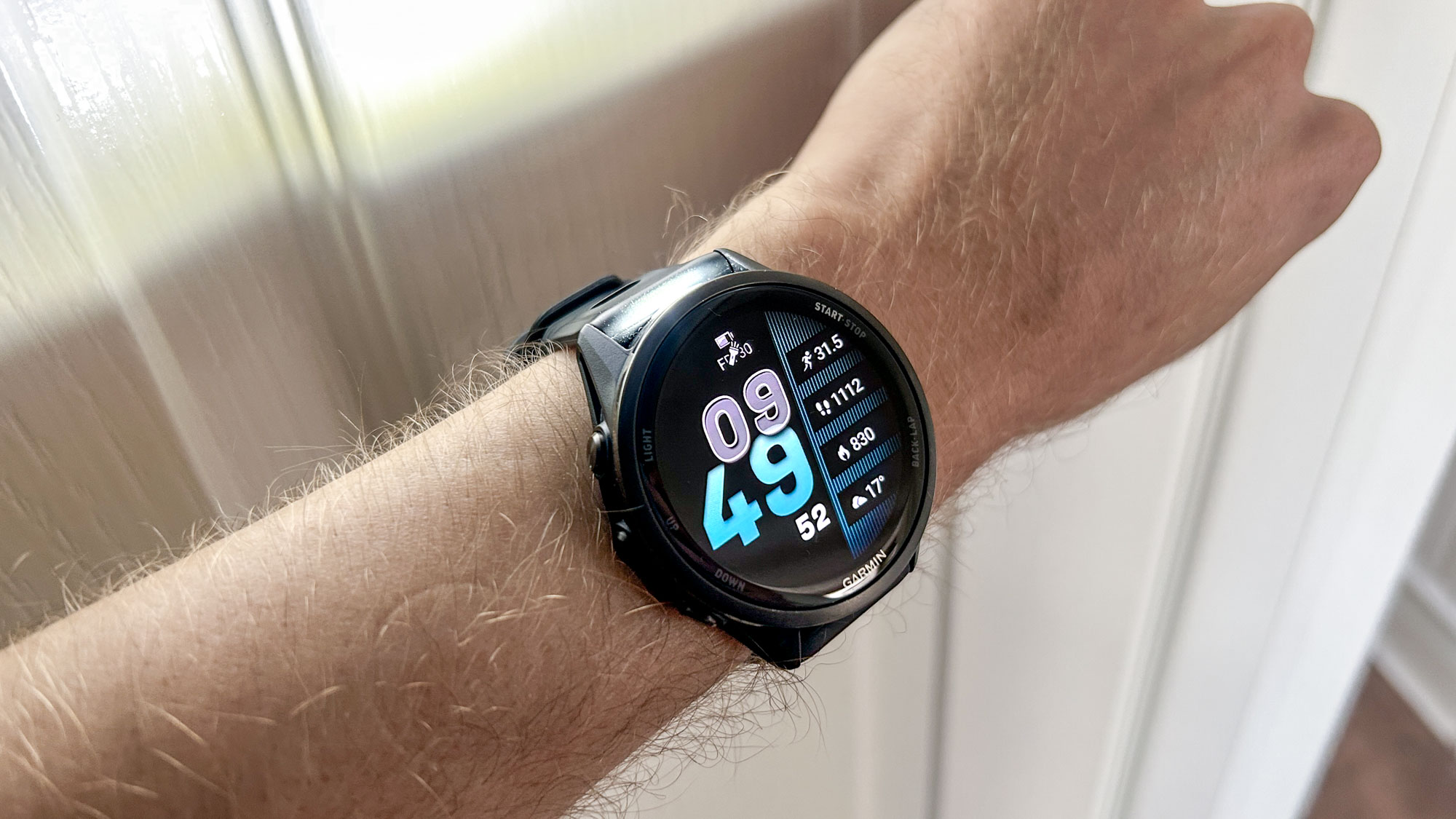
Along with its handy flashlight, the Forerunner 970 has several safety features, including the ability to send alerts to an emergency contact either manually (by holding down the light button) or automatically if a fall is detected during outdoor activities.
The LiveTrack feature also allows you to send your activity to others so they can follow it live or check in on you from time to time, if you’re heading for dangerous areas.
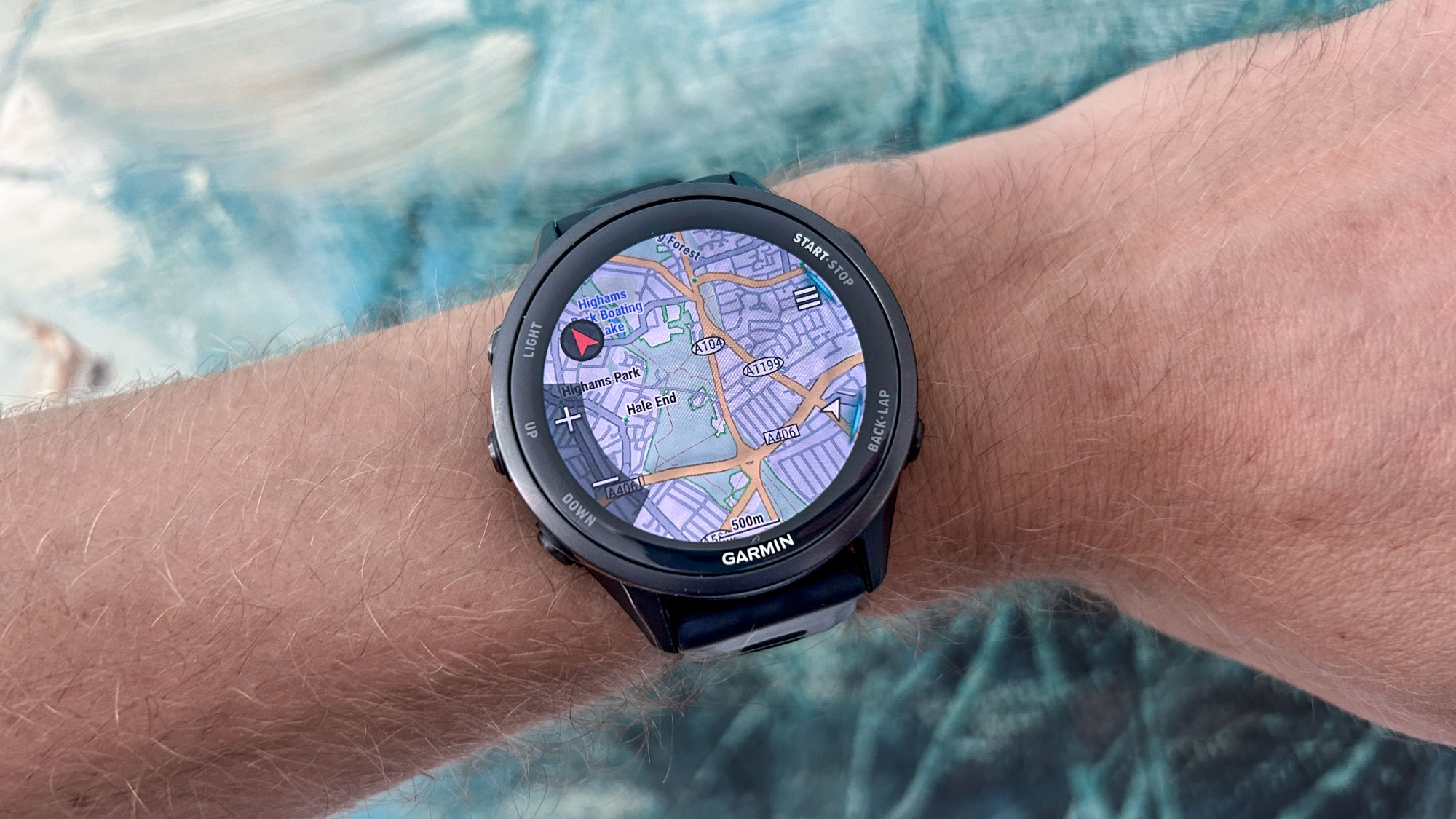
You can navigate those dangerous areas using the color maps on the Forerunner 970, which are routable maps that allow you to create routes on the watch itself — other brands have maps that can show routes on maps but can’t create routes or re-route you using trails if you go wrong.
Garmin’s mapping and navigation tools also include ClimbPro, which breaks out the climbs and descents on your route so you can judge your efforts. I find this invaluable on climbs in particular, in that it encourages me to slow down early in a climb because I know how much more uphill there is to go.
All sports watch brands and many smartwatches now offer maps and routes you can follow during activities, but Garmin’s features remain the gold standard in this area and you get all its best tools on the Forerunner 970.
Should you buy the Garmin Forerunner 970?

The Garmin Forerunner 970 is an outstanding sports watch and the only one that can really better it is the Garmin Fenix 8, which offers a more durable metal design and longer battery life.
However, the Forerunner 970 is cheaper and many will prefer the lighter, slimmer design, especially now that it includes a sapphire screen and built-in flashlight, features that were reserved for the Fenix line in the past.
It is an upgrade on the Forerunner 965, although the older watch is now available for under $500 and still has most of the excellent sports tracking features of the Forerunner 970. If you don’t mind missing out on the design upgrades on the Forerunner 970, the older watch is a better value.
Other older Garmin watches that might offer better value include the Garmin Epix Pro range, which comes in three sizes and is often on sale now. It’s a top watch with most of the sports tracking and navigation features of the Forerunner 970, with a Fenix-style metal design.
Outside of Garmin’s range, the competition is less fierce, in my opinion, unless you want a smartwatch like the Apple Watch Ultra 2, which doesn’t match the battery life or sports and navigation features on the Forerunner 970.
Coros, Polar and Suunto all have great AMOLED watches that are cheaper than the Forerunner 970, like the Suunto Race, Polar Vantage V3 and Coros Pace Pro, but none offer the same range of sports, navigation and smart features as the Garmin.
If the price doesn’t put you off, I’d say the Forerunner 970 and Fenix 8 are the best sports watches available, so your choice might be between the more rugged Fenix design and the lighter, sleeker Forerunner 970, which is also a little more affordable.

Nick Harris-Fry is an experienced health and fitness journalist, writing professionally since 2012. He spent nine years working on the Coach magazine and website before moving to the fitness team at Tom’s Guide in 2024. Nick is a keen runner and also the founder of YouTube channel The Run Testers, which specialises in reviewing running shoes, watches, headphones and other gear.
Nick ran his first marathon in 2016 and became obsessed with the sport. He now has PBs of 2hr 25min for the marathon and 15min 30sec for 5K. Nick is also a qualified Run Leader in the UK.
Nick is an established expert in the fitness area and along with writing for many publications, including Live Science, Expert Reviews, Wareable, Coach and Get Sweat Go, he has been quoted on The Guardian and The Independent.
You must confirm your public display name before commenting
Please logout and then login again, you will then be prompted to enter your display name.

